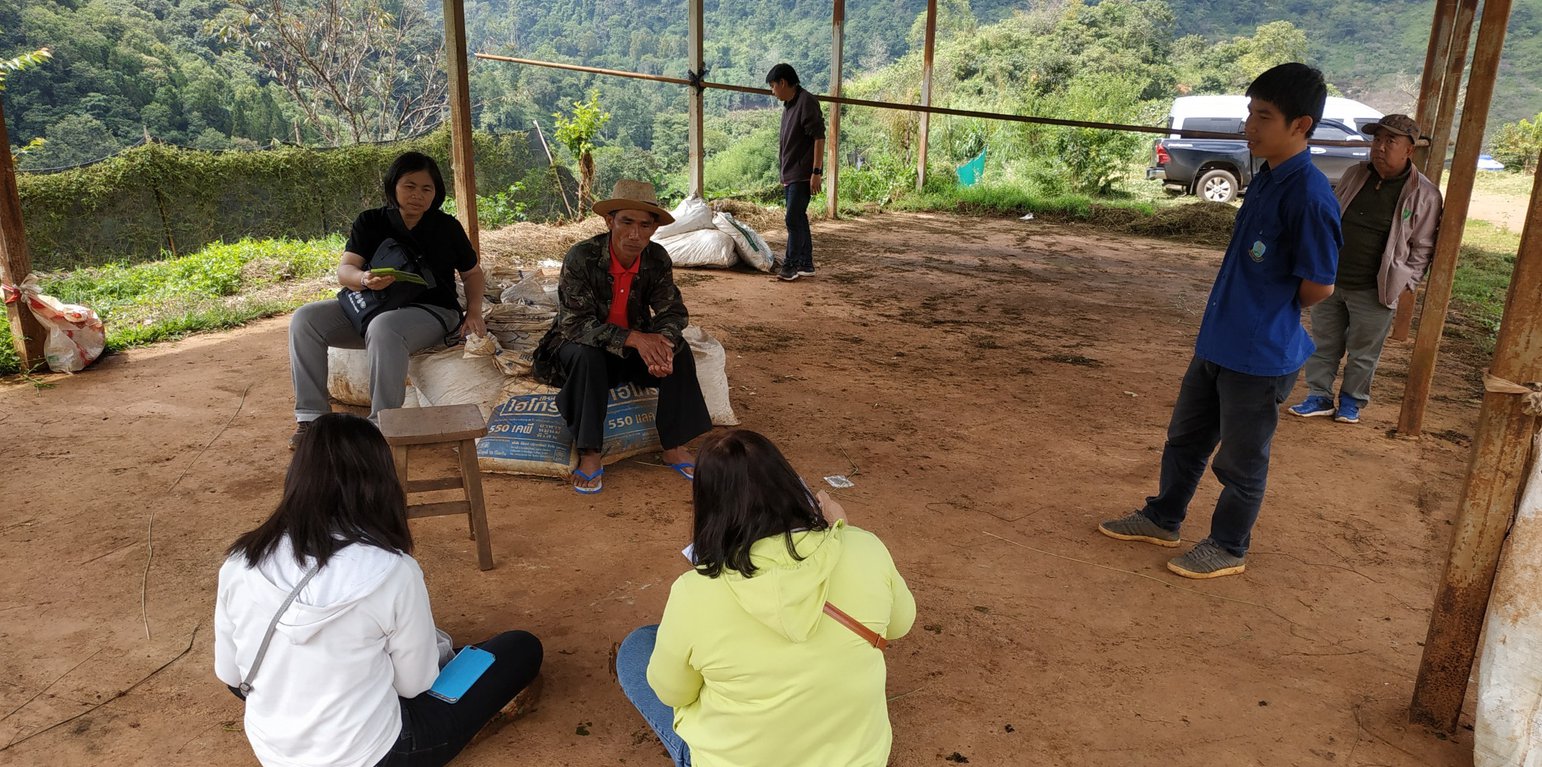



The approach is to develop and promote sustainable agriculture on steep slopes by establishing continuous bench terraces. Under this system, hilltribe farmers can produce good quality Chinese tea, and send their product to a processing factory nearby, which will create stable and high incomes and raise the quality of life. This production/ conservation system aims also to reduce deforestation and shifting cultivation problems, which lead to the degradation of soil and land. As such, soil and water conservation in this upstream sloping highland should promote and encourage appropriate sustainable land management to preserve natural resources and the environment.
In the early stage, Angkhang Royal Agricultural Station initiated this project to develop and promote Chinese tea cultivation on steep land, with close cooperation from the Land Development Department (LDD) to design the continuous bench terraces instead of the cold-climate fruit trees, which had greatly deteriorated. Local officers had allocated land (without ownership) to Palaung hilltribe people who were selected and guaranteed by the community leader for their aptitude and ability to cultivate Chinese tea according to the Good Agricultural Practices (GAP) Guidelines, and set up a Chinese tea producers group at Plot 2000. Angkhang Royal Agricultural Station organized this programme and trained them and also arranged for some local officers to advise on soil management, fertilizer use, and disease and pest control. Vetiver grass planting was introduced to maintain the terrace and road edges; compost was produced to use for improving soil properties and reducing their production cost, and cultivation materials were supplied to all land users through disbursement under the management of Doi Angkhang Agricultural Cooperatives. Local officers also supported marketing through purchasing at the guaranteed price according to the quality of the tea, and set up tea processing factories in this area. The project encourages all land users to observe and maintain their tea bushes and the land around them. Currently all land users are aware of how to sustainably use and maintain their land and soil resources. Moreover, local officers advise how to repair bench terraces themselves; however, if the damage is serious, the LDD officers will come in to help them repair.
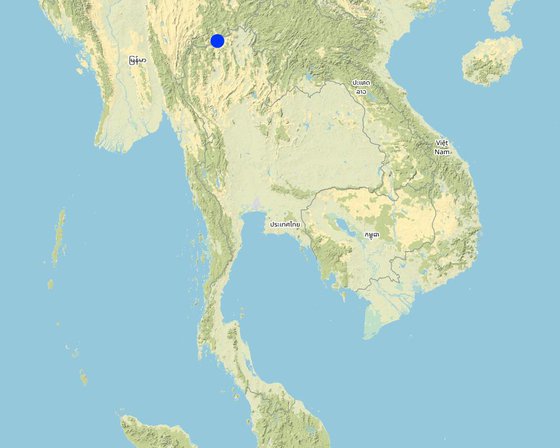
地点: Extension area for Chinese tea plantation (Farm 2000) at Angkhang Royal Agricultural Station, Mae Ngon Sub-district, Fang District,Chiang Mai Province, Chiang Mai Province, 泰国
启动日期: 1999
终止年份: 不适用
方法的类型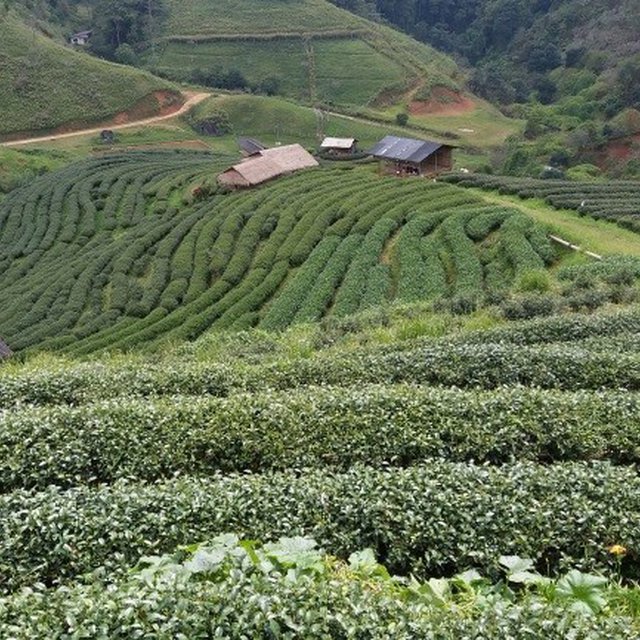
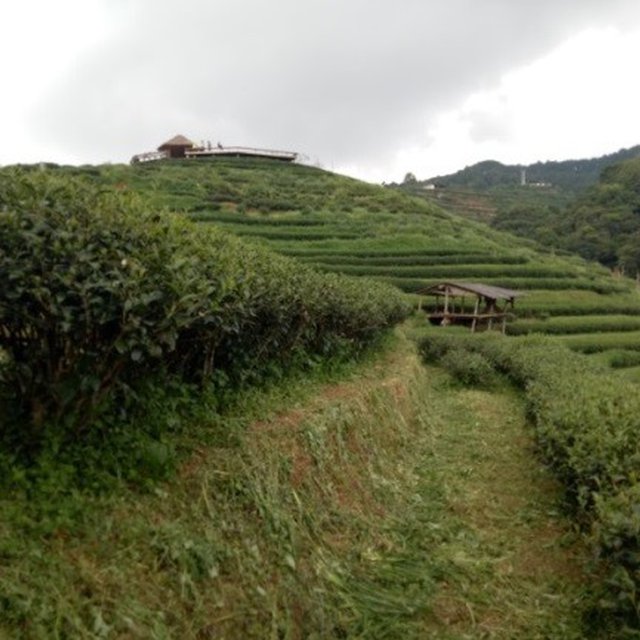
| 该方法涉及哪些利益相关者/执行机构? | 指定利益相关者 | 说明利益相关者的角色 |
| 当地土地使用者/当地社区 | All farmers belong to the hilltribe Palaung ethnic group. | All land users take care of bench terraces with advice from station officers. |
| 社区组织 | Angkhang Royal Agricultural Station, The Royal Project | The station officers extend and promote the occupation, encourage and advise in technology transfer the technical matter and knowledge to farmers. |
| 教师/学龄儿童/学生 | School children and students | Training course and study tour in the area |
| 地方政府 | Several local government agencies are directly involved in this process, including officers from the station and the Royal Project. | The station officers extend and promote the occupation, encourage and advise the farmers in technical knowledge, support production facilities and processing factory. |
| 国家政府(规划者、决策者) | Administrative officers in department and ministry level | Making decisions and creating policy |
Flow chart Operating procedures of bench terrace:
1. The organic Chinese tea plantation project is emphasized to promote and develop career of hilltribe people around the area of Angkhang Royal Agricultural Station to reduce forest encroachment and shifting cultivation and encourage them to use the land in a sustainable way with stable and high income.
2. Angkhang Royal Agricultural Station has selected the area of old cold-climate crops where soil has deteriorated; the station officers need to reshape the land and construct suitable conservation measures in this sloping area.
3. In 1999, Land Development Department (LDD) supported in the survey, design and construction of soil and water conservation measures as continuous bench terraces. The distance between two terraces and the vertical interval (VI) depend on the slope of the area, but the cultivation area of each terrace will be 3m wide.
4. The Angkhang Royal Agricultural Station has selected farmers to join this project by considering their aptitude, ability and opportunity for further development in organic Chinese tea plantation. Almost all land users have been approved by community leaders to practice and implement following the instruction from extension officers.
5. All selected land users should practice and maintenance as recommended by station officers. In planting tea, farmers will dig a small furrow along the terrace around 30cm deep and 30cm wide. Tea seedlings will be planted in the furrow with a spacing of 40-50 cm between trees (around 2,000 plants/rai). Surface soil around these tea seedlings will be mulched to maintain suitable soil moisture.
6. Farmers will produce organic Chinese tea so they need to avoid applying chemical fertilizers and other chemical substances, but limit the use only to natural materials. Compost is applied at a rate of 2 kg/tree along both sides of the tea canopy, and incorporated about 15 cm below the soil surface. This compost rate may be applied 3 times a year.
7. The Chinese tea is usually harvested from April to December, and will receive nourishment/maintenance ( January-March). At present, the No. 12 variety has an average yield of 800 kg/rai, with some 5-6 harvests a year, while the soft stem variety has an average yield of 600 kg/rai, with some 4-5 harvests a year. The station has received a budget from the Taiwanese government and the Institute of Highland Area Development to support the processing factory building, machinery and necessary techniques.
8. Maintenance of damaged bench terraces: all land users will repair by themselves in the dry season. In the serious case of erosion, the LDD will support such maintenance. In addition, vetiver grass is planted to strengthen the edge of the terraces.
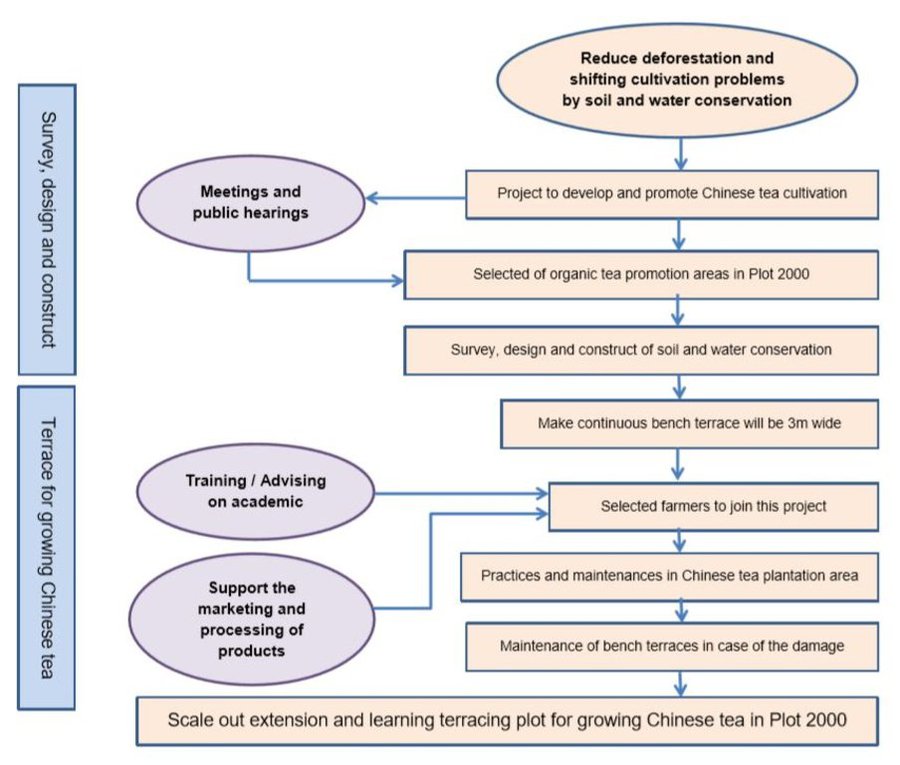
决策是由......做出的
决策是基于
Implementation activities, how to solve some problems, maintain and repair conservation measure, vetiver grass plantation and others
Maintain and repair budget around 500 baht per rai.
土地使用者的劳动力为
Almost land users are good in maintaining and repairing this terrace system.
They collaborate closely with local officers.
They cannot construct this terrace by themselves, but can maintain and repair the damaged areas. They know and understand the benefit and effectiveness of this measure.
They cannot have right in land ownership but they have rights in land tenure and utilize this land for Chinese tea in Plot 2000.
This bench terrace and other land management practices are firmly sustainable for Chinese tea production.